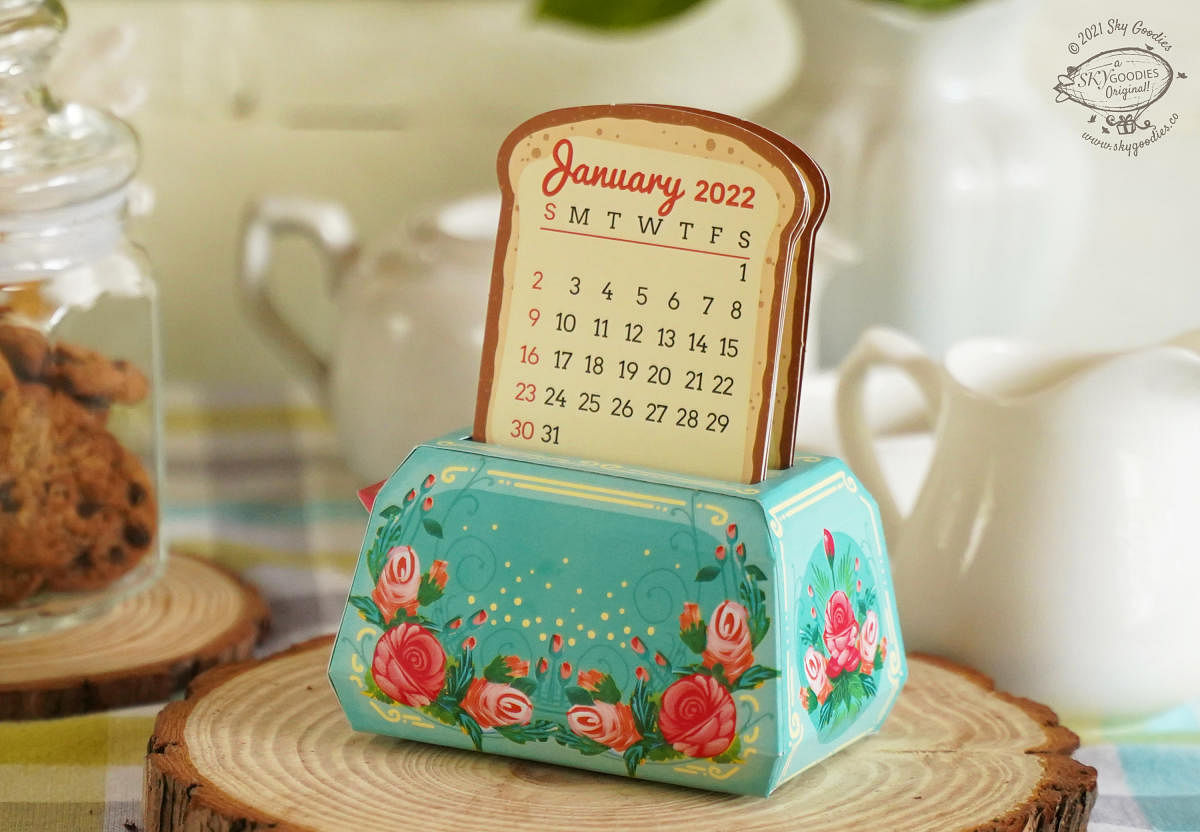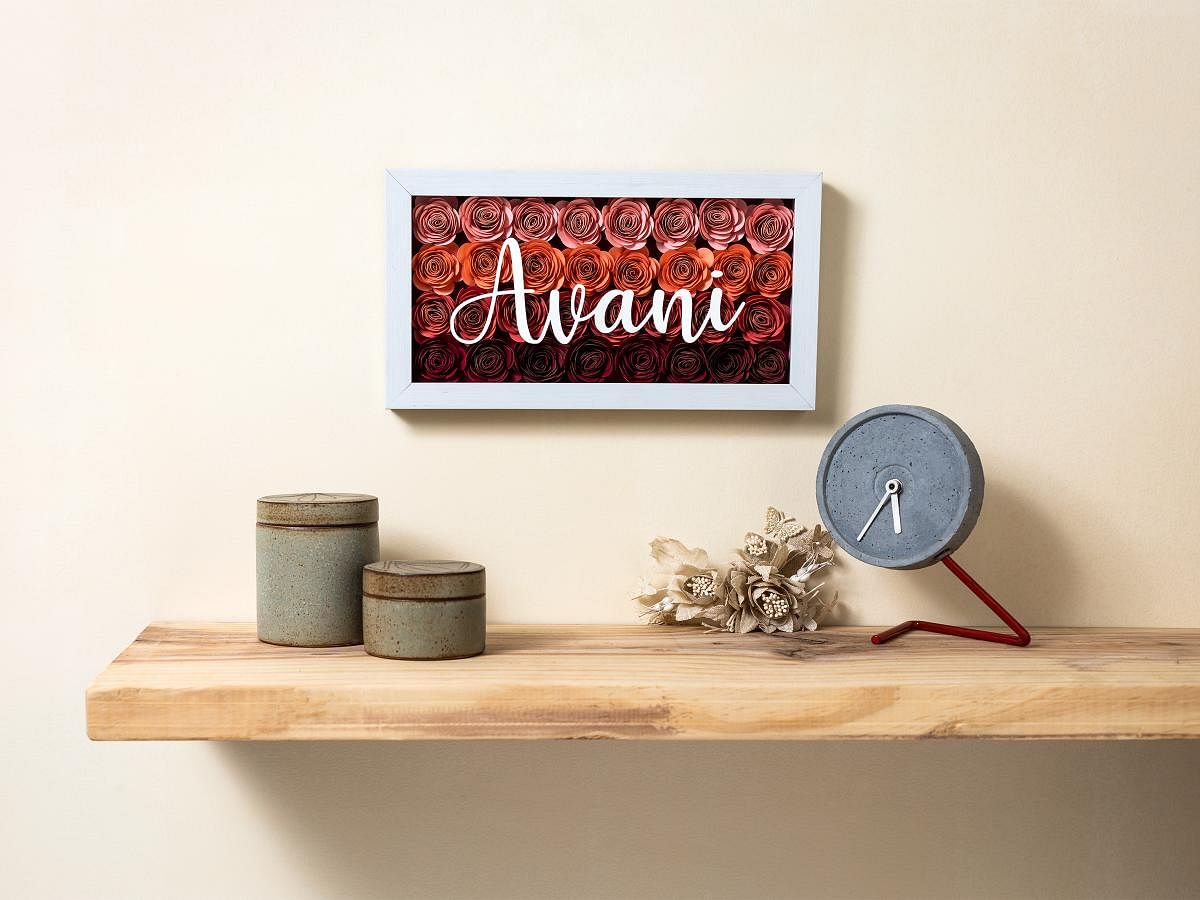

Once considered fragile and unfit for long-term use, paper is staking out its place in home décor. A few brands are reimagining the old art of paper cutting and folding to create desktop calendars, photo frames, collapsible lampshades and other products. Three Indian brands tell us why and how they are embracing paper.
Layered art
Paper Picado from Bengaluru makes nursery room décor, shadowboxes, name frames and DIY toys with cut paper, layered to create a 3D effect. Co-run by Kruthika Nataraju and Tarun Keshav, their style is inspired by papel picado, a cut paper folk art from Mexico used to decorate shrines and burials, and, Saanjhi, a stencilled paper cutting tradition from Mathura done in devotion to Lord Krishna.
Their products are made from cardstock, which is thicker than copier paper but thinner than cardboard. “These are available in many colours, and weights that are measured in gram per square metre or GSM,” says Kruthika, who is a general physician. The pulp density and stiffness of the paper varies with the weight.
Tools and materials used: For personalised name frames set on a bed of 32 paper florets, they use 210 GSM paper, as these are easier to bend. A far stiffer variety (350 GSM) is used to make mandala lanterns.
The use of laser cutting is minimal (it leaves brown edges on white paper). Minute details are hand-done using art-grade pen knives and blades and micro surgical instruments.
Challenges: Lightboxes depicting Santa’s sleigh flying over or a hot air balloon soaring are their best-selling items. “It takes 15-20 hours to make one. We work with 4-5 layers of white paper of different pulp densities to create a light and shadow effect,” explains Kruthika. “You can’t paint or merge colours on cardstock directly like you can on drawing paper. We need to first apply a primer first,” she points out another.
Origami lamps
Prerna Gupta’s lighting design studio in Mumbai is called For The Love Of Folds & Tucks, or FLOFT. One vertical of the studio makes hanging lampshades and table lamps using the Japanese art of origami.
She is also committed to sustainability. The paper used comes from bamboo, a
renewable source, and the instruction manual specifies the use of power-saving LED bulbs.
Origami makes it possible to collapse, flat-pack, and re-assemble these accessories wherever you go. Paper keeps it light — a package of a small table lamp and base weighs 650 gm.
The products come in five shapes (tear-drop, 10 fold box-shape, round, semi-circular, and disc with a whirlpool top), three sizes, and are made with a minimum of 30 folds. Prints are aplenty, about 50, inspired by nature (cherry blossoms), ethnic arts (Gond, and Warli), comics, and even Van Gogh art. The lamp bases are handmade and decoupaged to lend texture.
Tools and materials used: Industrial adhesive and neodymium magnets hold the paper and end pleats – no metal frames go in. Paper used is of stiffer variety (280 GSM) – pleats also make the structure strong. It is treated for heat resistance and can also be made water-proof. Paper is cut with a die cutter (a fabrication machine). Digital printing is used because painting with natural dyes and water can make the paper flimsy.
Challenges: “Translating a 2D artwork aesthetically into a 3D structure is the biggest design challenge,” she begins. Such as printing MJ’s face or a scene from ‘Calvin & Hobbes’. This requires figuring out the right shape for display. Some shapes take more time. “I got the tear-drop pendant lamp (her best-seller) in one go while semi-circular
took five-six tries. Precision, perfection and innovation are key,” Prerna says.
Nostalgic crafts
Sky Goodies’ inventory of 200 paper products will bring out the child in you. The package comes with pre-printed, pre-cut and pre-scored paper with fold lines and your task is to assemble them. You can set up an angel in 30 seconds or build a spitfire plane within an hour.
Misha Gudibanda runs the studio in Mumbai with her husband Amit. Their studio uses high-quality paper certified by the Forest Stewardship Council, meaning it is responsibly produced.
“Paper is a not a scary medium. We have made crafts with paper growing up. Our products get adults nostalgic,” says Misha on why she chose paper to make her DIY offerings.
On their catalogue are desktop calendars shaped like sewing machines, toasters, and ships. Other items: a tabla set, a gramophone, trucks, autos, planes, a tea set, a boombox, whimsical lights are decked with Indian iconography.
Kids can assemble dinosaurs, tigers, oryx and mandrill and learn trivia about them from the kit.
Tools and materials used: High-stiffness paper is used as it holds structure. “During the prototype stage, we make products with hands. This helps us to understand how folding and assembling them would feel (getting into the shoes of customers, basically),” shares Misha. Once finalised, they are cut with a die cutter, and motifs are transferred with offset printing.
Challenges: “I won’t call it a challenge but we test our products (rigorously) to check how intuitive they are to assemble and if people can follow the instruction manual well,” Misha explains.
Longevity
These products can last up to 25 years (when framed in glass). Keep them away from fire and water, and dust lightly.
Imported paper
These brands use imported paper because India has limited options, they say.